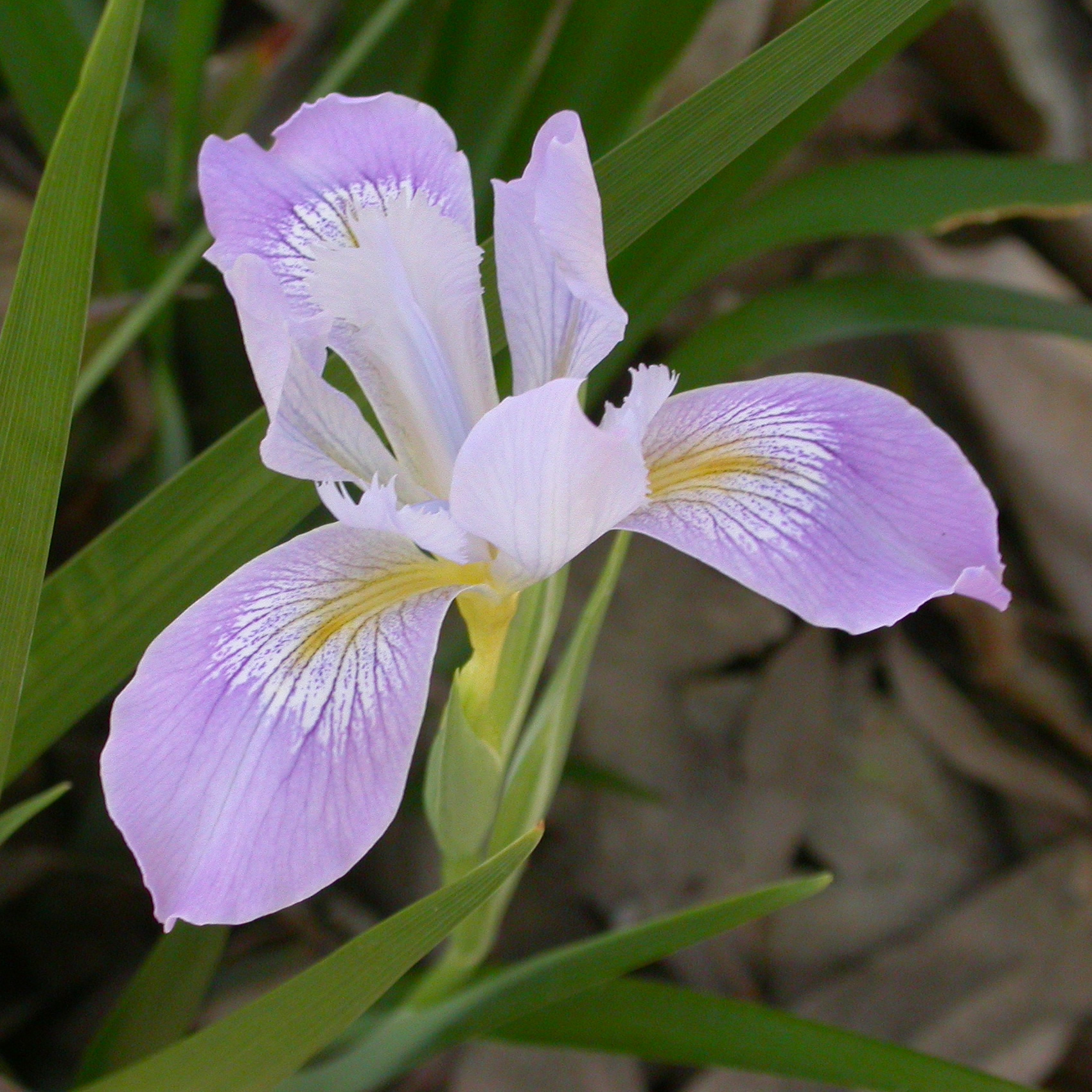Douglas Iris (Iris douglasiana) via BeWaterWise.com
A few months ago I was invited down the office of the Metropolitan Water District to meet a number of people involved in their BeWaterWise.com project to help reduce water usage in California. As part of their efforts, they focus on providing plant alternatives to water hungry lawns. Over the next several weeks, I will be highlighting some of their garden alternatives as part of this series. For more information on these plants and other water conservation ideas and programs, vist BeWaterWise.com. Follow the MWD on Twitter at BeWaterWiseH2O— Douglas

“Iris douglasiana flower 2003-03-17“. Licensed under CC BY-SA 2.5 via Wikimedia Commons.
Iris douglasiana (Douglas iris, syn. I. beechiana, I. watsonia) is a common wildflower of the coastal regions of Northern and Central California and southern Oregon in the USA. The Douglas Iris was first described by 19th century botanist David Douglas in Monterey, California. It grows mainly at lower elevations, below 100 meters (330 ft), though it is occasionally found at heights of up to 1,000 meters (3,300 ft). It is most common in grasslands near the coast; it is regarded as a noxious weed in pastures, because it forms clumps that inhibit other vegetation, and its leavesare bitter and unpalatable to cattle.
This is a typical beardless Iris of subgenus Limniris, series Californicae, growing from a rhizome that is typically under a centimeter in diameter. Its leaves are about 2 centimeters (0.79 in) wide. It flowers from April to June. Flowers are usually a purplish-blue, though occasionally white or yellow flowers are found. Two or three flowers are found on each stem, which is of variable height, ranging from 15–80 centimeters (5.9–31.5 in) tall.
Several varieties have been recognized, for example Iris douglasiana var. altissima (Jeps.) and Iris douglasiana var. oregonensis (R. C. Foster), but the species is highly variable and the varieties may not be well enough defined to be of much practical use. The Douglas Iris hybridizes freely with several other species; its natural hybrid with I. innominata has been designated asIris ×thompsonii (R. C. Foster), and the garden hybrid with the same species as Iris ×aureonympha (E. H. English).
This plant has gained the Royal Horticultural Society‘s Award of Garden Merit.[1] ` — Wikipedia
- Douglas Iris (Iris douglasiana) at BeWaterWise.com
- Douglas Iris (Iris douglasiana) on Wikipedia
- Douglas Iris (Iris douglasiana) at La Pilitas Nursery
- Douglas Iris (Iris douglasiana) at San Francisco Botanical Garden
Previously in the Interesting Plant series:
- Malva Rosa (Lavatera assurgentiflora)
- Baby Blue-Eyes (Nemophila)
- Coral Bells or Alum Root (Heuchera)
- Deer Grass (Muhlenbergia rigens)
- Echeveria ‘Lola’
- View all past “Interesting Plant” posts
Interesting Plant is a series from A Gardener’s Notebook blog and podcast that highlights the most interesting plants I find in my Internet and real-world travels — Douglas


